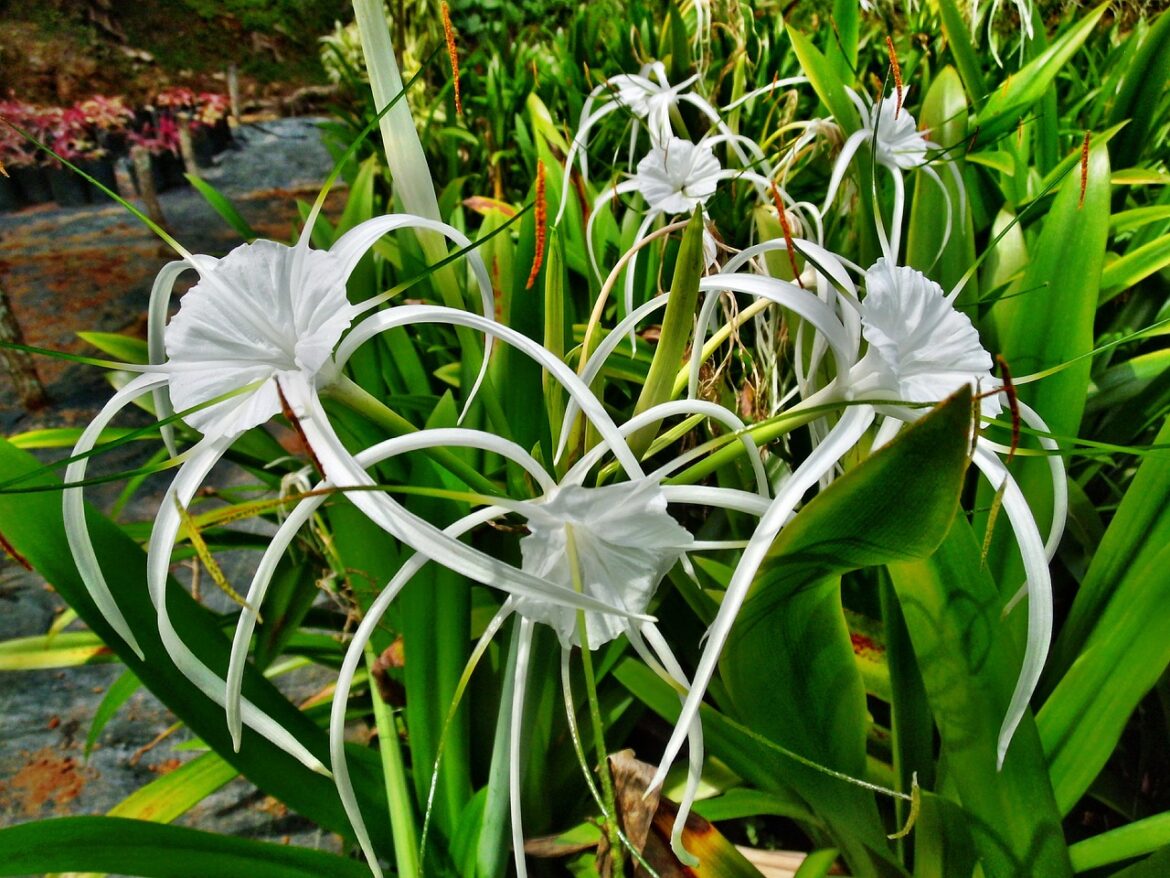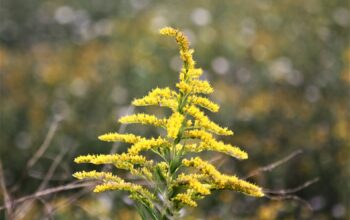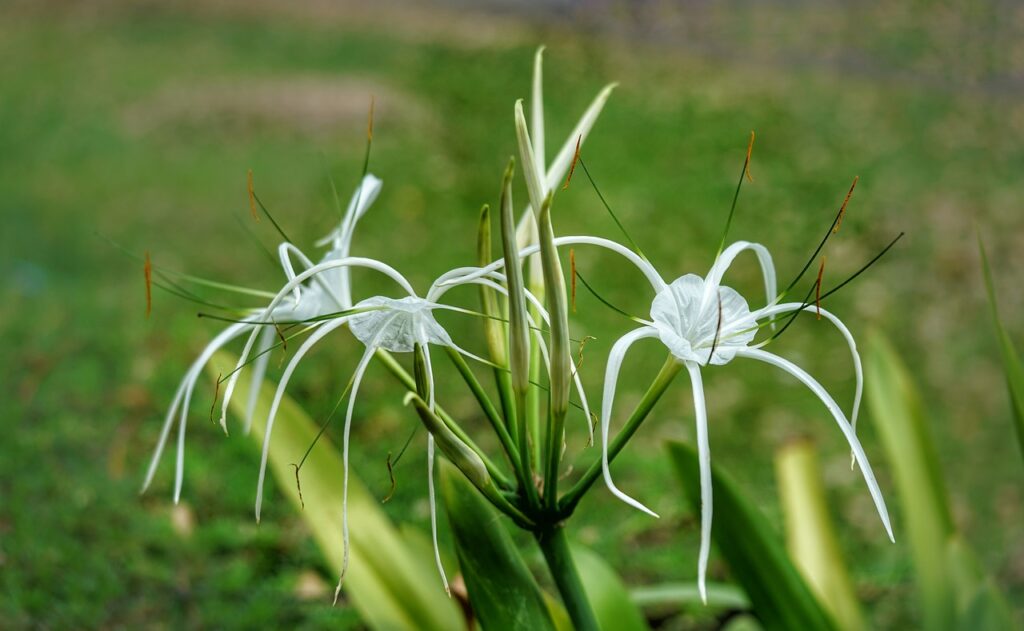
Walking around downtown in mid-summer, you will find many lily-like flowers in full bloom everywhere you look. They’re fairly easy to identify – long sturdy linear leaves protruding from the ground, unfolding to a plump stalk with a display of beautiful, usually pleasantly fragrant flowers. The hard part is determining what species of plant you are looking at. You may come across a southern swamp lily, or a wild hurricane lily, or a Carolina spiderlily. Confusingly, all of these flowers are called spider lilies!
Spider Lily is a generic name attributed to many plants in the Amaryllidaceae family. These can be found in four different genera: Crinum, Lycoris, Nerine and Hymenocallis.

Crinum is a genus of about 180 species of tropical and subtropical perennial plants found world-wide. The most common found here may be Crinum americanum, also called the southern swamp lily, bog lily or Florida swamp lily. Native to wetlands from Texas to Florida and up into the Carolinas, it will shoot a stalk up to 3 feet tall of large fragrant flowers around 4 inches wide, usually white with a tinge of pink. These plants prefer wet soil and medium sun, blooming in summer through fall.
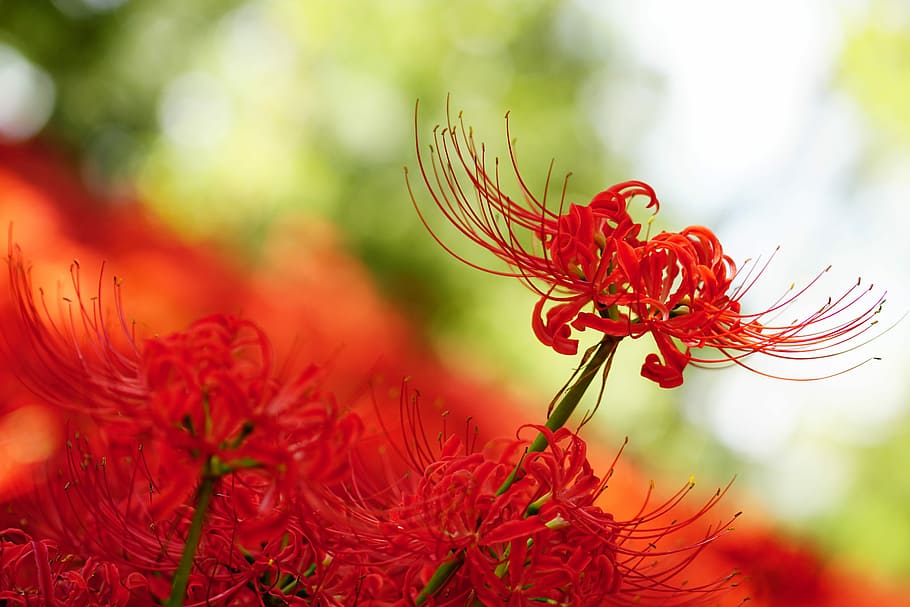
Lycoris is a smaller genus of only about 13-20 species, native to eastern and southern Asia and imported to North Carolina. These plants now grow wild over most of the southeastern US. The most common, or recognizable, would be Lycoris radiata, also known as the red spider lily. Through most of the south these flowers are better known as hurricane lilies, so named because they bloom in late summer and early fall, at the height of hurricane season. A bulbous perennial, flower stems shoot out of the ground before leaves appear, with an umbel bloom of coral-red flowers. The long stamens give this flower a very spider-like look.

Plants in the genus Nerine are native to South Africa and are more associated with rocky, arid habitats. Cultivated commercially for cut flowers, they are known for their showy long-lasting blooms. These plants do not tolerate tropical or humid climates, and are best grown indoors in our region. Some species are in danger of extinction due to loss or degradation of the already rare flower’s habitat. Measures are being made to preserve these species through cultivation.
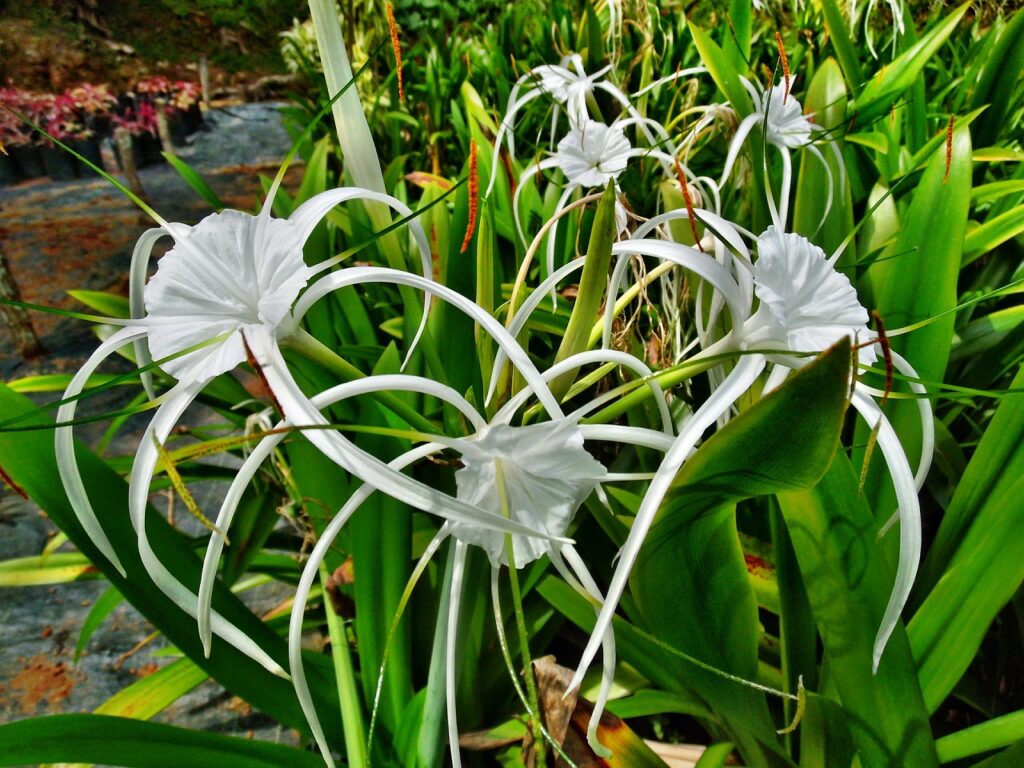
Perhaps most commonly associated with the name spider lily are those found in the genus Hymenocallis. With over 60 species native to the southeastern United States, Mexico, Central America, the Caribbean, and northern South America, this herbaceous bulbous perennial has been cultivated in warm climates around the globe. Species native to our region can be found growing wild in marshy habitats or cultivated in garden landscapes. Large lush leaves give way to tall stalks with multiple star-shaped flowers. Six narrow long petals attached to a delicate cup form these fragrant white blossoms. This is the only plant that is not well known by any other name than spider lily.
Best Part: None of these are lilies
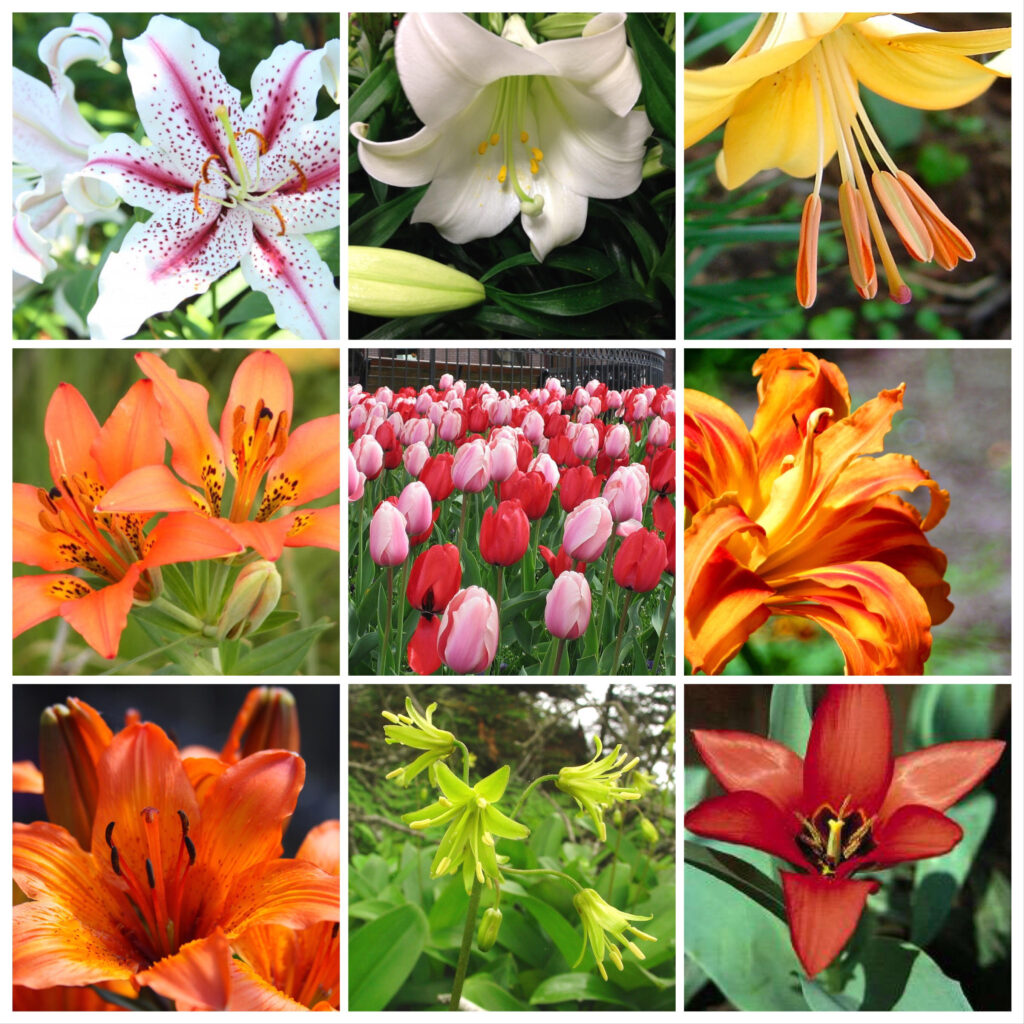
The most confusing thing about these plants is that none of them are actually lilies! Although they share many characteristics, true lilies are in the family Liliaceae of the order Liliales. The grouping of both Liliaceae and Liliales are widely disputed among taxonomist, leaving much discrepancy over genus and species. Liliaceae is said to include about 254 (or 15) genera and about 4075 (or 610) known species, including true lilies and tulips.

All flowers known as spider lilies are in the family Amaryllidaceae in the order Asparagales. Also called the the amaryllis family after the genus from which its named, it now contains about 1600 different species, divided into about 75 genera, 17 tribes and 3 subfamilies. Amaryllidaceae subfamilies are the Agapanthoideae (agapanthus), Allioideae (onions and chives) and Amaryllidoideae (amaryllis, daffodils, snowdrops).
Here are some references I used for this article:
https://en.wikipedia.org/wiki/Crinum_americanum
https://plants.ces.ncsu.edu/plants/crinum-americanum/
https://en.wikipedia.org/wiki/Lycoris_(plant)
https://en.wikipedia.org/wiki/Lycoris_radiata
https://en.wikipedia.org/wiki/Nerine
https://en.wikipedia.org/wiki/Hymenocallis
https://en.wikipedia.org/wiki/Liliaceae
https://en.wikipedia.org/wiki/Amaryllidaceae

